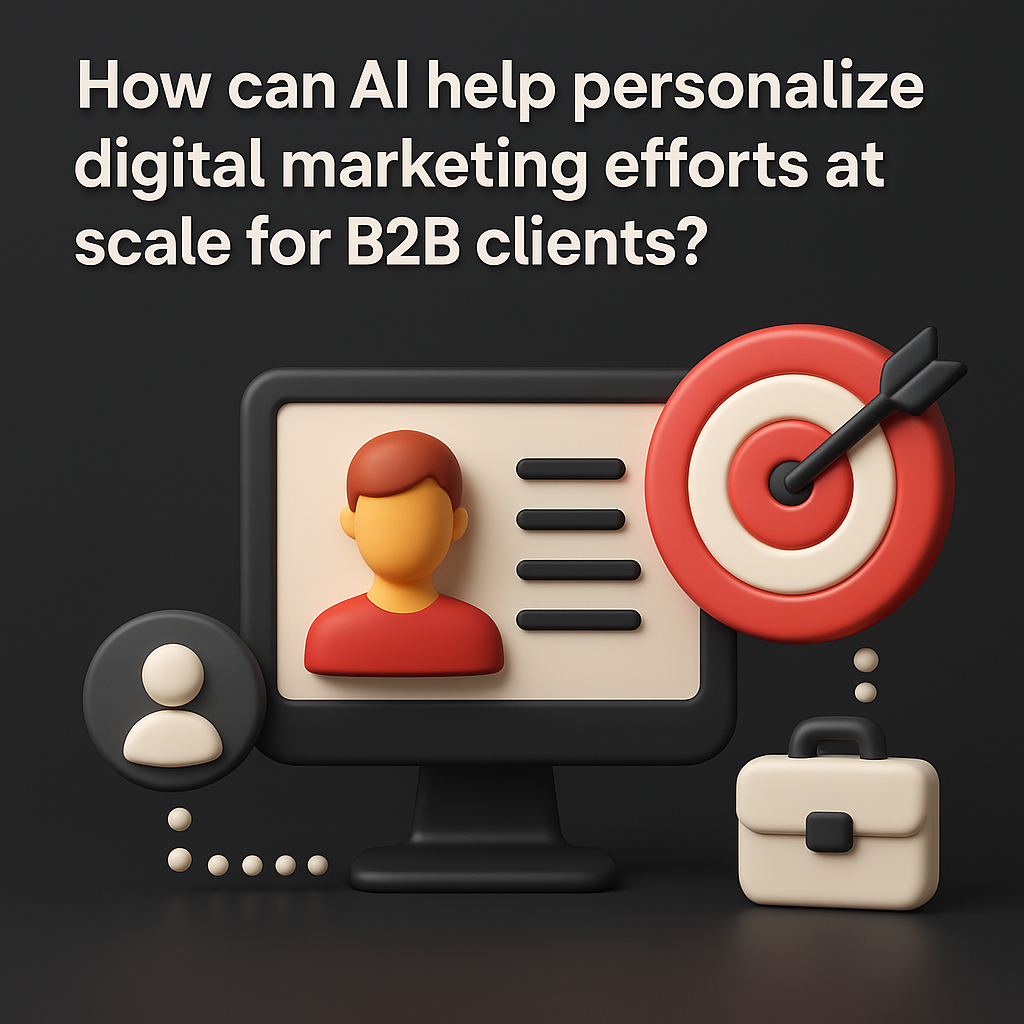What metrics should agencies use to measure success in AI-augmented lead generation campaigns?
As AI becomes central to modern lead generation, agencies can no longer rely on traditional metrics like clicks or impressions alone. AI-augmented campaigns analyze buyer intent, engagement quality, and predictive conversion likelihood, giving a deeper understanding of what truly drives performance. To measure success effectively, agencies need to blend classic KPIs with advanced AI-specific indicators.
Here are the key metrics that matter most in evaluating AI-driven lead generation campaigns:
1. Lead Quality Score (AI-Enhanced)
Unlike traditional models, AI-powered lead scoring is dynamic. It continuously evaluates real-time behaviors such as website interactions, content downloads, and engagement patterns to assess how “sales-ready” a lead is. An increase in the average lead quality score indicates better targeting and nurturing accuracy.
2. Predictive Conversion Rate
AI can forecast which leads are most likely to convert based on historical CRM data and behavioral signals. Tracking predictive conversion rates helps agencies understand how effectively their models identify high-potential prospects and how those predictions align with actual outcomes.
3. Pipeline Velocity
A major benefit of AI is faster deal progression. By prioritizing high-intent leads and automating touchpoints, AI helps shorten sales cycles. Monitoring pipeline velocity—how quickly leads move from initial engagement to conversion—shows how much efficiency AI adds to the process.
4. Cost per Qualified Lead (CPQL)
Instead of just measuring cost per lead, CPQL focuses on cost per sales-qualified or marketing-qualified lead. AI reduces wasted spend by refining audience targeting, so a declining CPQL reflects improved efficiency and smarter budget allocation.
5. Engagement Depth
AI tools can measure more than clicks—they analyze how deeply prospects interact with brand assets. Metrics like time on page, repeated visits, and social engagement depth reveal how effectively content resonates with target audiences.
6. AI Model Accuracy and Drift
It’s essential to monitor how accurate AI models remain over time. As buyer behavior shifts, model performance may degrade (known as “drift”). Regularly retraining AI with fresh data ensures predictions stay reliable and relevant.
7. Marketing-to-Sales Alignment
AI strengthens collaboration between marketing and sales by providing shared insights. Metrics like the ratio of Marketing Qualified Leads (MQLs) to Sales Accepted Leads (SALs) help determine how effectively AI insights are driving true pipeline value.
The Bottom Line:
Measuring success in AI-augmented lead generation isn’t just about how many leads are generated—it’s about how accurately, efficiently, and intelligently they’re converted. By focusing on metrics like lead quality, predictive conversion, and pipeline velocity, agencies can demonstrate tangible ROI and show how AI elevates every stage of the B2B funnel.
Read More:
https://intentamplify.com/lead-generation/ What metrics should agencies use to measure success in AI-augmented lead generation campaigns?
As AI becomes central to modern lead generation, agencies can no longer rely on traditional metrics like clicks or impressions alone. AI-augmented campaigns analyze buyer intent, engagement quality, and predictive conversion likelihood, giving a deeper understanding of what truly drives performance. To measure success effectively, agencies need to blend classic KPIs with advanced AI-specific indicators.
Here are the key metrics that matter most in evaluating AI-driven lead generation campaigns:
1. Lead Quality Score (AI-Enhanced)
Unlike traditional models, AI-powered lead scoring is dynamic. It continuously evaluates real-time behaviors such as website interactions, content downloads, and engagement patterns to assess how “sales-ready” a lead is. An increase in the average lead quality score indicates better targeting and nurturing accuracy.
2. Predictive Conversion Rate
AI can forecast which leads are most likely to convert based on historical CRM data and behavioral signals. Tracking predictive conversion rates helps agencies understand how effectively their models identify high-potential prospects and how those predictions align with actual outcomes.
3. Pipeline Velocity
A major benefit of AI is faster deal progression. By prioritizing high-intent leads and automating touchpoints, AI helps shorten sales cycles. Monitoring pipeline velocity—how quickly leads move from initial engagement to conversion—shows how much efficiency AI adds to the process.
4. Cost per Qualified Lead (CPQL)
Instead of just measuring cost per lead, CPQL focuses on cost per sales-qualified or marketing-qualified lead. AI reduces wasted spend by refining audience targeting, so a declining CPQL reflects improved efficiency and smarter budget allocation.
5. Engagement Depth
AI tools can measure more than clicks—they analyze how deeply prospects interact with brand assets. Metrics like time on page, repeated visits, and social engagement depth reveal how effectively content resonates with target audiences.
6. AI Model Accuracy and Drift
It’s essential to monitor how accurate AI models remain over time. As buyer behavior shifts, model performance may degrade (known as “drift”). Regularly retraining AI with fresh data ensures predictions stay reliable and relevant.
7. Marketing-to-Sales Alignment
AI strengthens collaboration between marketing and sales by providing shared insights. Metrics like the ratio of Marketing Qualified Leads (MQLs) to Sales Accepted Leads (SALs) help determine how effectively AI insights are driving true pipeline value.
The Bottom Line:
Measuring success in AI-augmented lead generation isn’t just about how many leads are generated—it’s about how accurately, efficiently, and intelligently they’re converted. By focusing on metrics like lead quality, predictive conversion, and pipeline velocity, agencies can demonstrate tangible ROI and show how AI elevates every stage of the B2B funnel.
Read More: https://intentamplify.com/lead-generation/



